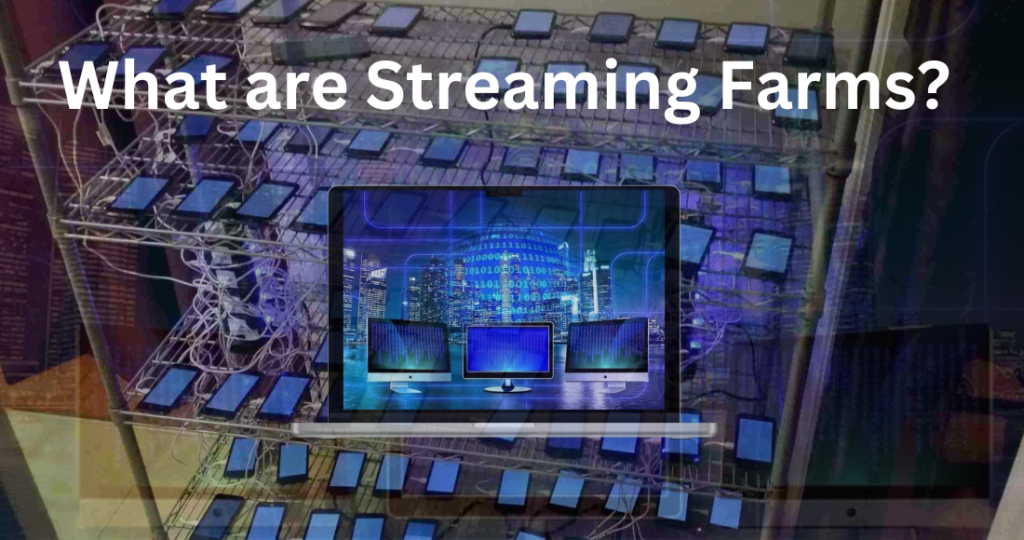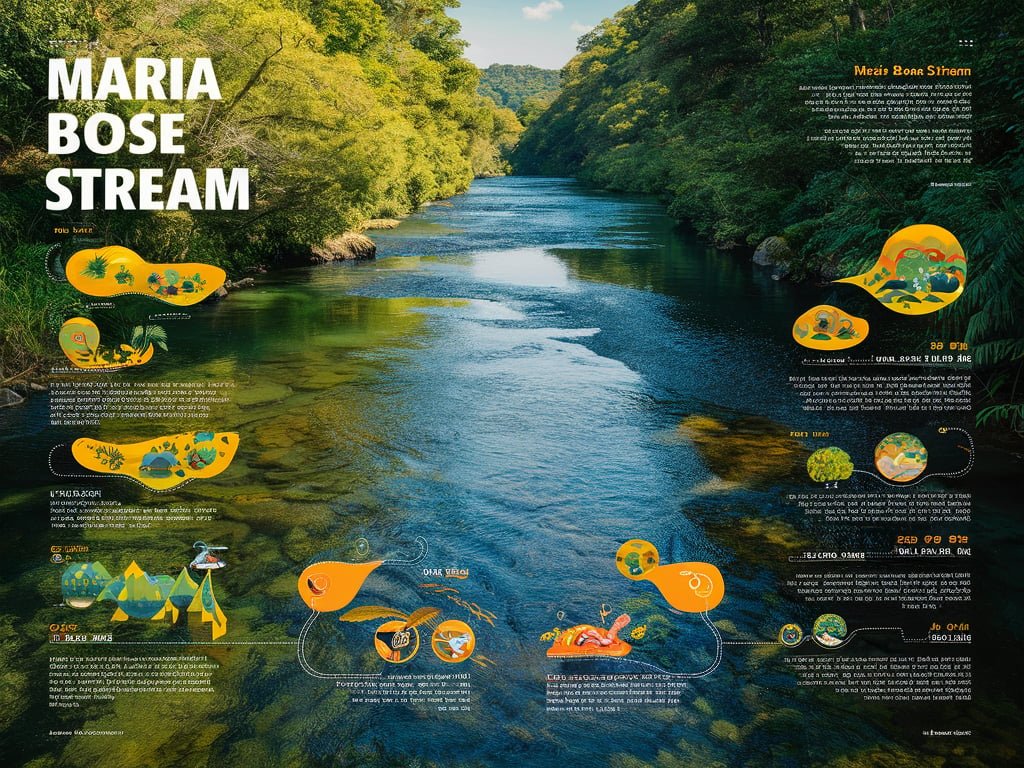In today’s digital age, understanding the dynamics of stream farms and streaming farms has become crucial. These concepts are transforming how we consume and interact with online content, making it essential for enthusiasts to grasp their significance. This article aims to demystify stream farms and streaming farms, providing practical insights and tips that will empower you to navigate this exciting field.
What are Stream Farms?
Definition and Explanation
Stream farms are systems designed to optimize the distribution and consumption of live-streamed content. These setups involve multiple servers working in unison to deliver high-quality streams to large audiences. Essentially, they manage the traffic and ensure that live content is accessible without interruptions, providing a seamless viewing experience.
Historical Context and Evolution
The concept of stream farms emerged with the rise of live streaming in the early 2010s. Initially, individual servers were used, but as the demand for live content grew, the need for more robust solutions became apparent. Stream farms evolved to address this demand, leveraging advanced technologies to enhance the reliability and quality of live streams.
How They Work The Technology and Processes Involved
At the heart of a stream farm is a network of interconnected servers that distribute the load of streaming data. When a user initiates a live stream, the content is encoded and sent to a central server. From there, the stream is split and distributed across multiple servers within the farm. These servers then deliver the content to viewers, ensuring minimal latency and buffering. This process involves sophisticated load-balancing techniques and real-time monitoring to maintain optimal performance.
Stream farms are pivotal in managing large-scale live events, enabling content creators to reach vast audiences without compromising on quality. By understanding how stream farms operate, you can appreciate the technological marvels that make uninterrupted live streaming possible.
What are Streaming Farms?

Definition and Differentiation from Stream Farms
Streaming farms, unlike stream farms, are specifically designed for the continuous playback of pre-recorded content rather than live streaming. They serve as large-scale platforms that manage and distribute a vast array of videos, music, and other media files to users on demand. While stream farms focus on live broadcasts, streaming farms handle the perpetual streaming of stored content.
Historical Context and Development
The concept of streaming farms took off in the late 2000s with the surge in popularity of on-demand content platforms like Netflix, Spotify, and YouTube. As the demand for instant access to media grew, so did the need for more sophisticated systems to manage and deliver this content efficiently. Streaming farms evolved from simple server setups to complex, distributed networks capable of handling millions of simultaneous streams.
How They Function Technology and Operational Methods
Streaming farms operate through a network of data centers that store and serve media files to users. When a user requests a video or song, the streaming farm locates the file in its storage system, processes the request, and delivers the content through a network of servers. This involves sophisticated algorithms for data retrieval, compression techniques to reduce bandwidth usage, and load balancing to ensure smooth playback. Advanced caching mechanisms are also employed to speed up delivery and enhance user experience.
The Impact of Stream and Streaming Farms
Influence on Digital Content and Media
Stream and streaming farms have revolutionized the way we consume digital media. They have made it possible to access live events and on-demand content from anywhere in the world, at any time. This has transformed the entertainment industry, giving rise to new forms of content and enabling creators to reach global audiences instantly.
Effects on Content Creators and Viewers
For content creators, stream and streaming farms provide platforms to showcase their work to a broader audience without the need for extensive technical infrastructure. This democratization of content distribution has led to an explosion of creativity and diversity in the digital media landscape. For viewers, these technologies offer unprecedented convenience and choice, allowing them to watch live events, movies, TV shows, and listen to music whenever they want.
Economic Implications and Industry Changes
The economic impact of stream and streaming farms is significant. They have disrupted traditional media distribution models, leading to a shift in revenue streams from physical sales to digital subscriptions and ad-based models. This has forced established media companies to adapt and innovate to stay competitive. Additionally, the rise of streaming services has created new job opportunities in technology, content creation, and digital marketing.
Stream and streaming farms have not only changed how we access and enjoy media but also how the media industry operates. Their influence continues to grow, shaping the future of digital content and opening up new possibilities for both creators and consumers.
Benefits and Challenges
Advantages of Using Stream and Streaming Farms
- Scalability: Stream and streaming farms allow you to scale your operations efficiently. Whether you’re a content creator or a business, you can handle increasing traffic and demand without compromising performance.
- Enhanced User Experience: By leveraging multiple servers, you can deliver high-quality streams with minimal latency and buffering, ensuring a smooth and enjoyable viewing experience for your audience.
- Cost Efficiency: Setting up your own stream or streaming farm can be more cost-effective in the long run compared to relying on third-party services, especially if you have high streaming needs.
- Control and Customization: Having your own setup gives you complete control over your content and how it’s delivered. You can customize the infrastructure to meet your specific requirements and preferences.
Common Obstacles and How to Overcome Them
- High Initial Investment: The cost of purchasing servers, networking equipment, and software can be substantial. To overcome this, start with a smaller setup and scale as your needs grow. Leasing equipment or using cloud services can also reduce initial costs.
- Technical Complexity: Setting up and maintaining a stream or streaming farm requires technical expertise. Consider hiring professionals or investing in training to build the necessary skills.
- Maintenance and Upgrades: Regular maintenance and upgrades are essential to ensure optimal performance. Schedule routine checks and stay updated with the latest technology to keep your infrastructure running smoothly.
- Bandwidth Requirements: High-quality streaming requires significant bandwidth. Work with your internet service provider to ensure you have the necessary bandwidth and consider using a Content Delivery Network (CDN) to offload some of the traffic.
Real-Life Examples and Success Stories
- Twitch Streamers: Many successful Twitch streamers have set up their own stream farms to handle large viewer counts and improve stream quality, leading to increased engagement and revenue.
- Educational Institutions: Universities and schools use streaming farms to deliver online lectures and courses, ensuring reliable access for students worldwide.
- Media Companies: Large media companies like Netflix and Hulu operate extensive streaming farms to manage and deliver vast libraries of content to millions of subscribers.
Ethical Considerations
Discussion on the Ethical Aspects of Stream and Streaming Farms
- Content Authenticity: Ensuring that the content being streamed or distributed is original and not pirated is crucial. Stream and streaming farm operators must take measures to verify the authenticity of the content they handle.
- User Privacy: Protecting the privacy of viewers is essential. Operators should implement robust security measures to safeguard user data and prevent unauthorized access.
- Transparency: Being transparent about data usage, content sourcing, and operational practices builds trust with users and stakeholders.
Potential Legal Issues and Regulations
- Copyright Infringement: Streaming copyrighted content without proper licenses can lead to legal issues. Always ensure you have the necessary rights and permissions for the content you distribute.
- Data Protection Laws: Complying with data protection regulations like GDPR (General Data Protection Regulation) is vital. Implement policies and practices to protect user data and comply with legal requirements.
- Broadcasting Regulations: Depending on the region, there may be specific regulations governing live broadcasts and content distribution. Stay informed about local laws and ensure your operations are compliant.
Best Practices for Ethical Operations
- Obtain Proper Licenses: Always secure the necessary licenses for the content you stream or distribute. This not only keeps you legally compliant but also supports content creators.
- Implement Strong Security Measures: Protect user data with encryption, secure servers, and regular security audits. Ensure your users’ privacy is a top priority.
- Be Transparent and Honest: Clearly communicate your policies regarding data usage, content licensing, and other operational practices. Transparency fosters trust and builds a loyal audience.
By understanding and addressing the benefits, challenges, and ethical considerations associated with stream and streaming farms, you can operate responsibly and effectively in this rapidly evolving industry.
Future Trends and Developments
Emerging Trends in Stream and Streaming Farms
- Artificial Intelligence and Machine Learning: AI and ML are being increasingly integrated into stream and streaming farms. These technologies can enhance content delivery through predictive analysis, automated moderation, and personalized recommendations.
- Edge Computing: Utilizing edge computing can reduce latency and improve the speed of content delivery by processing data closer to the user. This trend is set to revolutionize the efficiency of streaming farms.
- Interactive Streaming: The future will see more interactive streaming experiences, including real-time viewer engagement, augmented reality (AR), and virtual reality (VR) integrations, creating immersive and engaging content.
- Blockchain Technology: Blockchain can provide more secure and transparent ways to manage digital rights and payments, enhancing trust and efficiency in content distribution.
Predictions for the Future of the Industry
- Increased Demand for High-Quality Content: As internet speeds improve globally, the demand for high-definition and ultra-high-definition content will continue to rise. Streaming farms will need to adapt to deliver higher quality streams seamlessly.
- Growth of Niche Streaming Services: Specialized streaming services catering to specific interests and communities will grow, supported by targeted stream farms that cater to these niche markets.
- Sustainable Practices: With growing awareness of environmental impacts, stream and streaming farms will adopt more sustainable practices, such as energy-efficient servers and renewable energy sources.
Innovations to Watch Out For
- 5G Technology: The rollout of 5G networks will greatly enhance streaming capabilities, offering faster speeds and lower latency, enabling more sophisticated and high-quality streaming experiences.
- Hybrid Cloud Solutions: Combining on-premises and cloud solutions can provide more flexibility and scalability for streaming farms, optimizing performance and cost-efficiency.
- Enhanced Security Measures: Innovations in cybersecurity will provide better protection for streaming farms, ensuring the safety of content and user data.
Conclusion
Stream and streaming farms have transformed the way we consume digital content, providing scalable, cost-effective, and high-quality streaming solutions. We explored what stream and streaming farms are, their historical context, technological underpinnings, and the benefits and challenges they present. Understanding these systems is crucial for content creators, businesses, and enthusiasts looking to leverage the power of digital media.
The evolution of stream and streaming farms highlights the rapid advancements in technology and the growing demand for instant, high-quality content. These farms have not only revolutionized content delivery but also created new opportunities and challenges in the digital landscape. As technology continues to evolve, so too will the capabilities and applications of stream and streaming farms, shaping the future of digital media consumption.
The world of stream and streaming farms is dynamic and full of potential. Whether you’re a content creator looking to reach a larger audience, a business exploring new ways to deliver your services, or simply an enthusiast fascinated by the technology, there’s much to discover and engage with. Explore the latest trends, consider the ethical implications, and stay informed about technological advancements to make the most of this exciting field.



